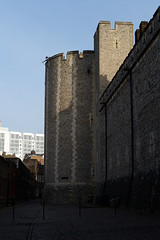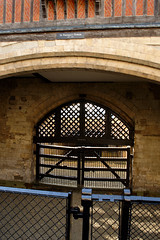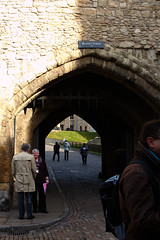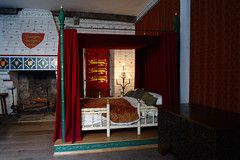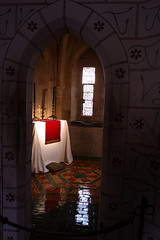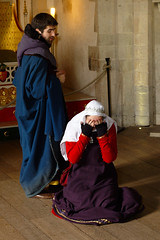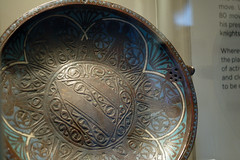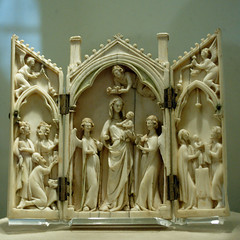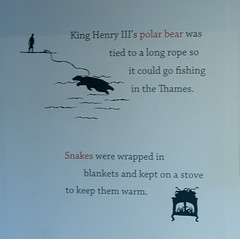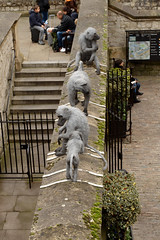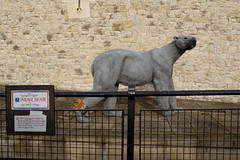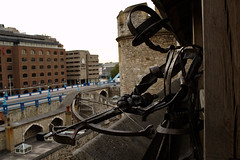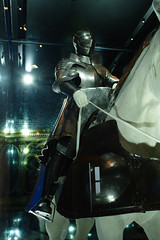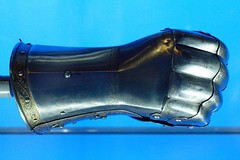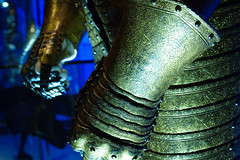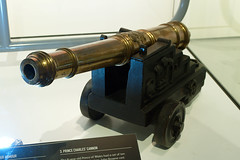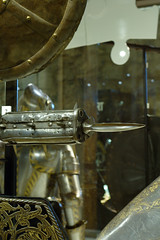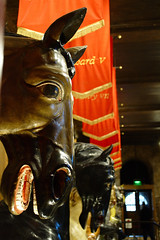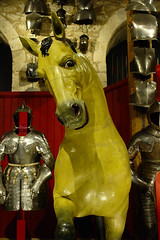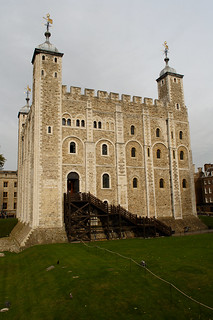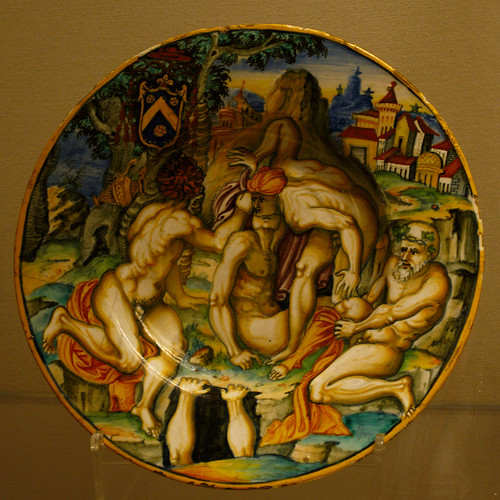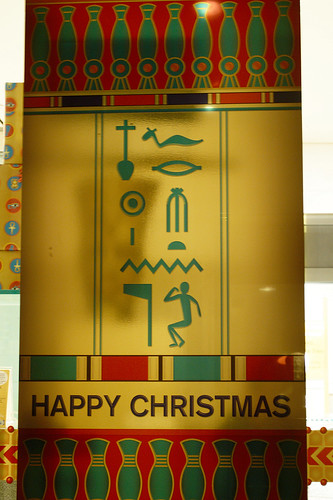I’ve finally got my photos sorted out from our visit to the Tower of London at the beginning of November and I’ve uploaded them to flickr – highlights in this post, more if you click through to flickr.
We’d been meaning to go & visit it for a while – I’m pretty sure I’ve visited the Tower before, but not since I was a kid and J didn’t think he’d ever been. We decided to start with the Yeoman Warder tour (as recommended by one of J’s colleagues) so spent 15 minutes or so hanging about after we got there photographing some of the buildings on the other side of the Thames while we waited for the tour to start.
Then it was off for the tour – the one that left shortly before we arrived at the Tower had looked like there was a fair amount of “audience participation” so I was a little dubious. But it was actually really good. In part because the guy who was leading it didn’t get a particularly loud response from the group when the first place to cheer came up, so he dialled that down. It was basically a walk through the grounds of the Tower showing us the various buildings (mostly from the outside) and giving us an overview of the history of the place, interspersed with anecdotes & facts about the Yeoman Warders (who are NOT TOUR GUIDES as he told us a couple of times 😉 ). We then got to go into the Chapel of St Peter ad Vincula (no photos unfortunately) – this is only open to people on the Yeoman Warder tours. This is the place where the people executed at the Tower were buried – some have been reburied elsewhere, but Anne Boleyn amongst others is still there. I’d recommend doing the tour if you visit the Tower – it sets everything neatly in context.
After the tour we decided we’d have a break for coffee and a snack (so we could delay lunch until after lunchtime to avoid the busy time). Then we went and looked at the Medieval Palace area of the tour. This was built and lived in by Henry III and Edward I and the “Traitors Gate” was actually the entrance to this palace – it’s only later during Tudor times that traitors were brought into the Tower here. My favourite bit of this section was the mock-up of a royal bedchamber that they had. As well as some furniture & wall decorations they also had a chap in there playing recorder (not the King, Edward was in Westminster that day, as he said 😉 ), and somehow the atmosphere & everything worked really well. They also had a throne room set up & there was some sort of storyteller thing going on in there, but I was less convinced by that. In one of the towers a bit further along there was also a display of medieval items that they’d excavated from the area of the palace, including a rather fine glass chess piece.
Further round the walls there were the towers where people had been imprisoned – one had lots of fine graffiti (all behind glass so nigh on impossible to photograph). Some of it was really very impressive & intricate – including the only one I have a decent photograph of, that’s of an astrological table. There was also an exhibition about the Royal Menagerie that used to be kept in the Tower (it later formed the basis of London Zoo). We were particularly struck by the story of the polar bear of Henry III, which was tied on a long rope to the side of the Thames then allowed to swim in the river & fish. And the snakes which were apparently wrapped in blankets and put on the stove to keep warm during winter. As well as the exhibit in one of the buildings the Menagerie was also “illustrated” with a series of wire sculptures by Kendra Haste that were dotted around the site. And another aspect of the Tower – the guards – were represented with metal sculptures (I don’t know who by) around the walls.
After this we headed off to look at the Crown Jewels – no pictures, they’re pretty strict about not allowing photography in there. The great benefit of visiting in November during term time was that there weren’t any queues for this bit and we could go up and down the little moving walkways round the regalia more than once to get a decent look. As well as the obvious (the crowns) they also had a whole load of ceremonial maces & ceremonial tableware. The dishes weren’t that interesting, but the maces were neat 🙂 Related to this area of the Tower was another exhibit we went to during our walk along the wall from the Medieval Palace – there was a room about the diamonds used in the various crowns, which was more interesting than I expected. It included the neat fact that the diamonds in one of the crowns were hired (one of the George’s crowns, I think, no photos so I have no note).
Then we had a break for lunch (the restaurant place on site was nice but pricey) and after that set off to do the White Tower (what I think of as “the Tower proper”). We didn’t actually manage to finish looking round this – ran out of time and they were shutting it up before we got a proper look at the top floor. The exhibits in the White Tower that we did look at included some history of the building, and a lot of armour. Perhaps a little overwhelmingly much armour (but I did still look at it all, because it’s cool 🙂 ). This ranged from Henry VIII’s various suits of armour (ornate yet still practical) to the armour for the Stuart dynasty (ornate for the sake of ornate, particularly in the case of Charles I), and some modern armour too. They also had a variety of weaponry (including a combination mace and gun belonging to Henry VIII which was a thing I had no idea existed), some of which was gifted to the Crown by territories in the Empire or other diplomatic gifts. And they had the model horses (and some model heads) from an old display from the 17th Century of the “Line of Kings”. Those horses looked disturbingly manic to me! As I said, we didn’t see much of the top floor but notable things that we did see included the block & axe used for the last beheading at the Tower, and a dragon made out of bits of armour(!).
A very good day out 🙂 Well worth a visit if you’re in London – budget lots of time for it & don’t be put off by the price (we spent 6 hours there and didn’t see everything).







